OPTIMISE RETAIL STRATEGIES WITH ADVANCED RETAIL ANALYTICS
The retail market has been a central focus of the world’s economy for decades and in an increasingly globalised world, retail is still a backbone of the economy. However, it is no longer the same, invariable process of supplying to meet demand. The economics of retail are becoming more complex by the day; changing consumer demands, unstable and perpetually fluctuating markets and constrictive profit margins are quickly imposing new restrictions and constraints on the market. However, by analysing large-scale patterns and taking advantage of advanced retail business intelligence software like datapine, these constantly changing patterns can be better understood and utilised through a comprehensible retail dashboard to improve business models and ensure stable profits.

"datapine gives us all the insights we need in a compact space. Thanks to datapine we are able to review all relevant customer data and react on trends and opportunities much faster."
Moritz Klussmann
INCREASE PROFITS WITH RETAIL ANALYTICS
Relying on intuition is no longer enough for success in the retail industry. Increase profits by utilising mobile technology and large-scale retail analytics software on the fly.
- Quickly collect and visualise multi-faceted business data
- Access top-level and cross-channel sales analytics
- Explore person-to-person interactions to maximise profits
- Analyse the effects of your merchandising strategy
- Receive immediate notifications of irregularities and take action

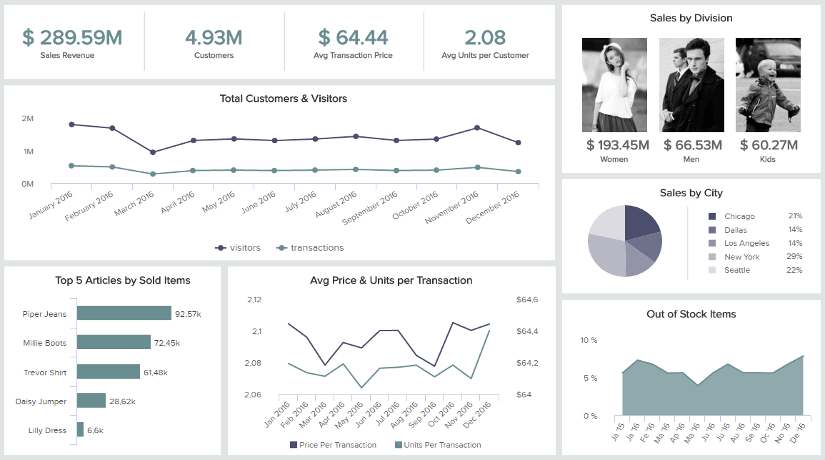
Become a data wizard within less than 1 hour!
HOW YOU BENEFIT FROM MODERN RETAIL ANALYTICS
Modern retail analytics solutions help to increase merchandising intelligence by better assessing your stocks and assortments, tracking consumer behaviours or identifying some missed opportunities. This will optimise your sales by location planning, which can lead to strategic sales initiatives development. The evaluation of the impact of sales promotion enables you to effectively forecast what could occur in the market. Consequently, you have a better control over the merchandise stocks.
Retail analytics software gives you the ability to connect with customers in real-time and will decrease unnecessary expenditures. At the same time, it can increase profit margin spreads and provide a better consumer experience from start to finish. Managing retail, consumer, merchandising and demographic data in real-time guarantees higher levels of productivity thanks to a more equitably shared workload, but also less missed sales opportunities.

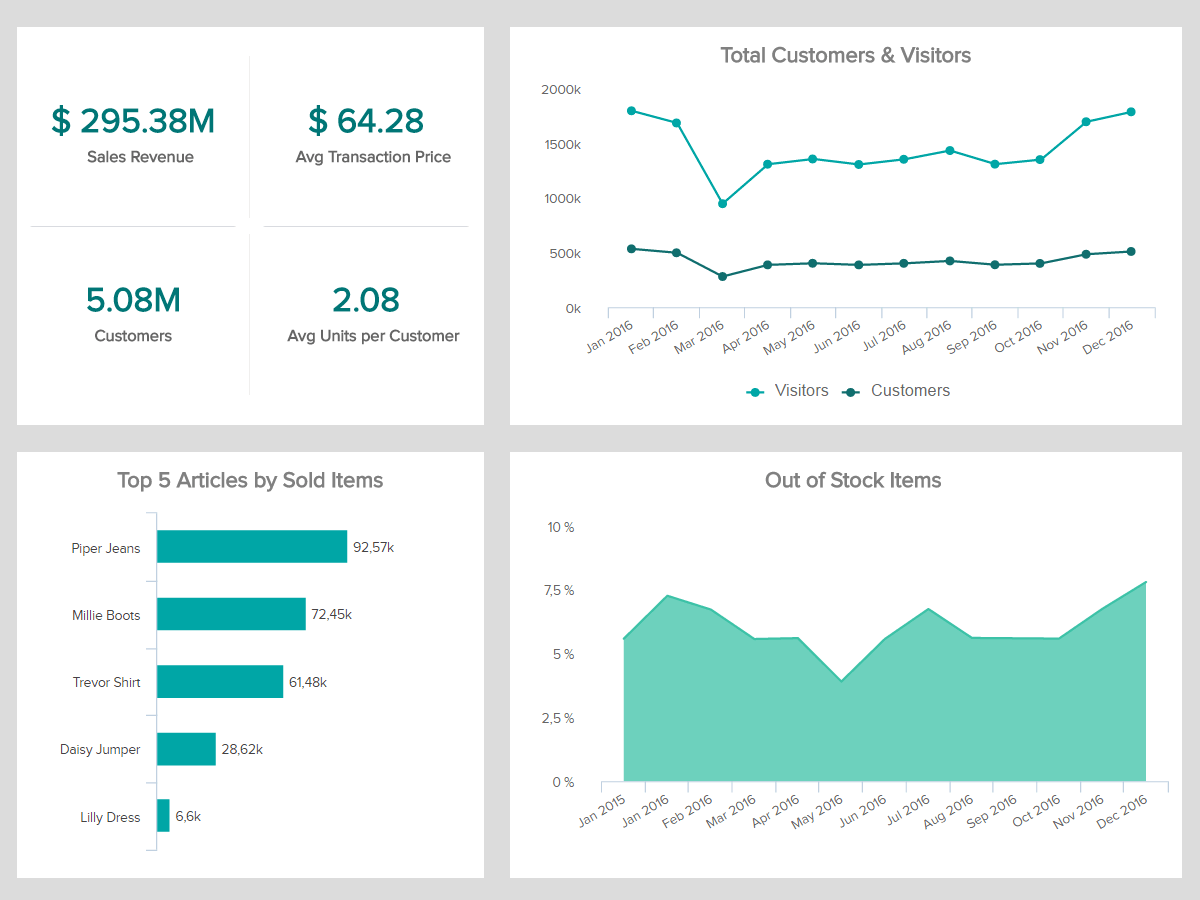

Learn how progressive retailers are getting ahead of the competition with advanced retail analytics.
Read Blog Article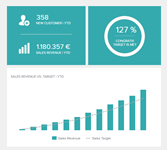
Mute the noise of your retail data to focus on insightful and impactful KPIs.
View KPIs
Get an evaluation! Want to talk to us about how datapine can help your business?
Get in touchWhy is retail analytics software so important?
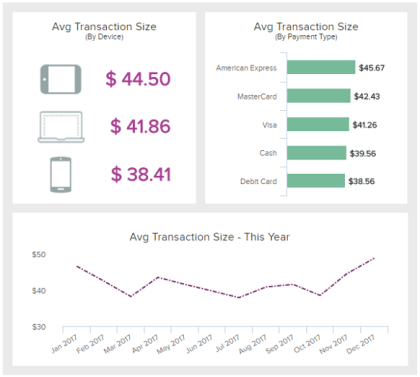
Retail analytics software is a tool used to provide detailed analytical data on key performance indicators used to track transactions, units per customer, volume of sales, return rates and many others while empowering actionable and effective business insights. Even before “data” became as big as it is today, retailers were already studying consumers’ shopping patterns, tracking their purchases to uncover trends and insights. Retail analytics provide analytical data on different level, from the supply chain to the consumer demand to the inventory management, and is crucial for marketing and procurement decisions. Retail is a very customer-centric sector, that still has to manage logistics and supply chain. Retail analytics software will help you identify who are your customers, their geographic and demographics data, but will also provide insights on your products and stores themselves: what are the best-seller products, which store performs best etc.
So, the data adoption is already settled for retailers – the challenge lies in their capability to extract insights from it, and transform businesses. Retailers can benefit on every level from analytics, and reshape processes, operations and even company structure to maximise sales, productivity, and ultimately, product loyalty. Feel free to have a look at these real world big data in retail.
The impact of retail business intelligence software
Potential business impacts of modern retail analytics software are infinite. On the customer side, analytics will help you identify and retain the best ones, by knowing who is loyal to your brand and customising your proposition accordingly to a specific customer need. Indeed, retaining customer is cheaper than acquiring new ones, and can in addition bring you some more clients, if you are doing your job well. By optimising your pricing and promotional strategies, you can also maximise profit. On the infrastructure, logistics and facility side, analytics can bring you even more. Thanks to an analysis of consumers trends, you will have a better demand and supply management, avoiding shortages or inventory surplus. This balanced inventory will also lead to a better ROI (Return on Investment) and many other retail KPIs significantly enhanced. This gives an incredible opportunity to focus better on what your customers want and expect from your products and services, and gives you much more agility: by studying trends and patterns, you can anticipate demand and change prices, or adjust them differently in case of a supply chain shortage. And it doesn’t stop here; by using a BI software, you can build a predictive model that will tell you what to expect in the future based on your historical data, and thus decrease time for taking important business decisions.
Progressive retailers are gaining the competitive edge by effectively generating relevant insights and supporting business decisions for all key retail business processes. These processes include retail merchandise management, marketing, customer relations and operations. Let’s look into several of the ways retail organisations are, and aren’t, effectively using retail data:
Insights-driven Retail Merchandising & Marketing: Retail companies are using point-of sale, marketing, web-data, social-media and loyalty data to make informed decisions about pricing, promotions and assortment management. One great example of how retailers are using this data is purchasing trends analysis. Retail analytics software can predict purchasing trends using existing data. This is especially necessary for merchandise strategy before big purchasing cycles. There are various stages and methods to these analyses. Trend forecasting algorithms scour social media posts and web browsing habits to unearth buzz. Then ad-buying data is also collected and analysed to see what the competition’s marketing departments will be pushing. On top of this, brands and marketers engage in “sentiment analysis” to determine the context when a product is discussed. All this retail data can be used to accurately predict what the top selling products in a category are likely to be. Having the merchandise customers want at the price they are willing to pay is imperative; however, if consumers don’t know about your products, it is a moot point. Businesses are capitalising on retail business intelligence to make marketing investments where they really matter. These businesses are seeing significant results.
Insights-Driven Retail Operations: Successful retail analytics can easily pinpoint improvement opportunities across the entire supply chain, from sourcing and purchasing to in-store availability management. At the simplest level, a retail KPI dashboard for performance of your store associates can provide insights and subsequent savings for any retail operations. At a more complex level, data is collected from sensors throughout every stage of supply chain. For example, motion and light sensors may reveal areas of theft, sensors that detect shock may reveal areas of damage and sensors may help reveal whether or not food and drugs remained within safe temperatures. This data can be used to react to current issues and proactively and strategically prepare for potential product and customer issues.
Personalised Customer Experiences: Knowing your customer is crucial. Digital shopping provides businesses with an increasing potential customer base. It has also created a highly educated consumer that can compare all competitive products / services with a few clicks. Focused marketing and customer interaction is key to keeping a loyal customer and generating new business as well. Retailers need to analyse who their current customers are, where their potential customers are and how to keep them all happy. Transaction and demographic data generated at point-of-sale, through marketing tactics and through loyalty programs provides a wealth of retail data prime for analysis. One example, the data can be used to forecast demand for individual geographic areas. Armed with this knowledge, retailers can be proactive and able to fulfill orders more quickly and efficiently. This is a great way to keep your customers happy. Returning to insights driven marketing and merchandising, data on how individual customers interact and make contact with retailers can then be used to decide which is the best way to grab their attention with a particular product or promotion. Analysing and tracking this data through professional dashboards is a great way for retail organisations of any size to stay ahead of the pack.
Predicting Future Behaviour: Retail analytics also has the ability to provide organisations with a “crystal ball” with customer intelligence and predictive analytics. This growing field is significantly changing the retail marketing industry. Imagine this scenario: a retailer wants to reach out to high-valued, loyal shoppers who seem to be separating from the brand. Using retail business intelligence software this retailer builds a predictive model built from their stored data. This model is able to identify which shoppers are likely to purchase again within 7 days. This allows the retailer to segment their customers by how loyal they truly are. The power of predictive analytics doesn’t stop there. The model can also determine if there are shoppers that may not purchase goods / services in the next 7 days but have a high average order value. For these valuable customers, the business provides an incentive to bring the shoppers back to the brand. In either case, predicting what your customer’s behavior is critical to understanding how best to interact with them. Now, imagine using your existing data to make these kinds of changes?
At datapine, we think that retail analytics are key for an overall better management of your stores and facilities. You can improve your employees’ productivity and well-being, thanks to appropriate staffing planning and resources allocation. You can increase customer engagement and satisfaction, as well as the operational efficiency of your supply chain and product innovation. With our retail business intelligence software, we want to put these analytics at your fingertips, and sooth the operation of an already very-busy and constantly changing environment.
TAKE ADVANTAGE OF MODERN RETAIL ANALYTICS SOLUTIONS
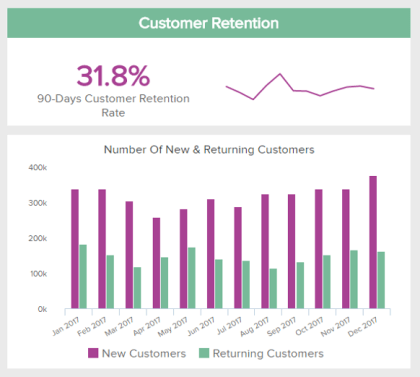
Implementing effective retail analytics solutions can bring you a lot. It can reveal problems some customers might be facing, it helps you in analysing their behaviour, and increases your brand awareness, customer loyalty, and retention rates. However, to achieve these benefits, you previously need to extract the right insights from your data, which is not a piece of cake considering the numerous platforms you use to interact with customers, supply chain, or manufacturers.
This is where a retail business intelligence software like datapine can play a crucial role to give you the competitive advantage that will make you stand out from the competition. Indeed, by gathering the tremendous amount of data collected on a daily basis through all kinds of software – CRMs, ERPs, Google Analytics, and so many more – you have the possibility to work on them all at the same time, conjointly, and easily perform cross-database analyses that would otherwise require time, knowledge, and ultimately money. Thanks to datapine’s retail BI software, you can do all this in a matter of minutes and make the most out of your data by extracting actionable insights in the mountains of data analysed.
Become a data wizard in less than 1 hour!
